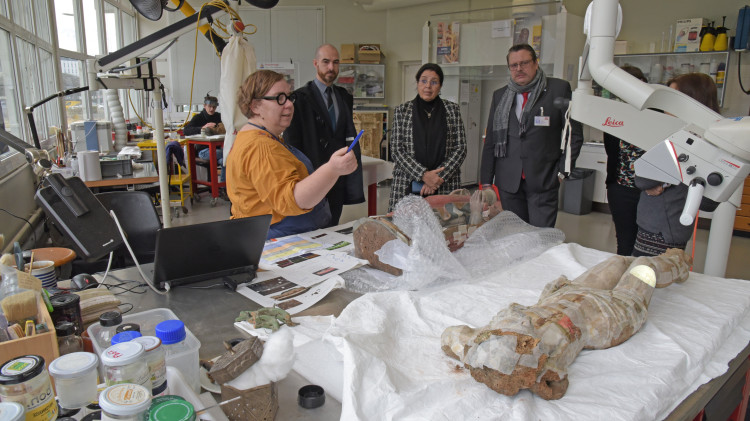Najat Mokhtar, IAEA Deputy Director General and Head of the Department of Nuclear Sciences and Applications, and Karine Froment, ARC-Nucléart Director, finalized a partnership by signing an agreement on Monday, February 27, 2023, at the French Atomic Energy Commission (CEA) Center in Grenoble. Representatives of France's Ministry of Culture, the city of Grenoble, the ProNucléart Association, and the CEA attended the ceremony.
The International Atomic Energy Agency (IAEA) as an autonomous international organization of the United Nations system, collaborates with designated institutions of its Member States to implement its programmatic activities. Focused on research, development and training, the IAEA Collaborating Centre scheme helps expand scientific and technical capabilities for the use of nuclear applications worldwide. Nuclear science and technology help reach important targets of the United Nations’ Sustainable Development Goals, such as cultural heritage preservation.
The collaboration is focused on two major techniques in which ARC-Nucléart is specialized: insecticide and fungicide treatments by simple exposure to gamma radiation and consolidations by radiation-curable resins. ARC-Nucléart operates a unique irradiator in the world dedicated to heritage conservation and has built up a solid expertise in these fields since the 1970s.
"Thanks to the combination in a single multidisciplinary team of skills related to scientific and technical fields on the one hand, and cultural fields on the other, the IAEA's collaboration with ARC-Nucléart will generate direct benefits for cultural heritage preservation and will support international efforts," said Mokhtar.







